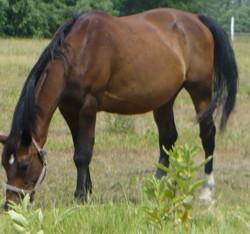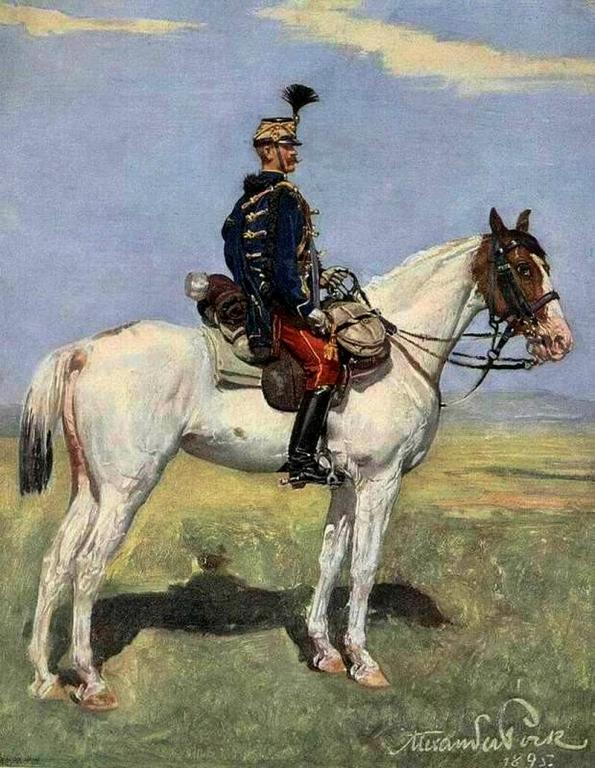
Continent: Europe
Country: Hungary
Weight: 450 – 550 kg
Height: 155 – 165 cm

The Hungarian Half-bred, known in Hungarian as Magyar félvér, originates from Hungary, in the heart of the Carpathian Basin.
Its development dates back to the 19th century, within the great state studs of Mezőhegyes, Bábolna and Kisbér, where horse breeding held a strategic role in the Austro-Hungarian Empire.
Hungarian breeders then carried out selective crossings between:
The aim was to create a cavalry and sport horse, combining elegance, endurance, and strength, suitable both for war, light agricultural work, and leisure riding.
After the Second World War, the breed was officially organized, and its stud-book was established in 1995 to preserve this genetic heritage.
The Magyar félvér is closely tied to the Puszta plains, the vast grasslands of the Great Hungarian Plain (Alföld), which have always provided favorable conditions for horse breeding.
The main centers of development and conservation of the breed are the former state studs:
Today, breeding of the Hungarian Half-bred extends across Hungary, with private and regional breeders affiliated with the official stud-book. It is found mainly:
Although primarily bred in Hungary, the Magyar félvér has been exported in limited numbers to:
The Magyar félvér is regarded as a national breed in Hungary. It represents a heritage stemming from the great historic studs (Mezőhegyes, Bábolna, Kisbér) and stands as one of the pillars of Hungarian breeding, alongside the Nonius, Lipizzan, and Kisber Felver.
Thanks to the influence of Thoroughbreds and Arabians, the Hungarian Half-bred has passed on:
These qualities have made it a valuable foundation for the development of the modern Hungarian sport horse.
Its profile as a well-balanced half-bred makes it a useful breed for:
In a context of globalization, where international sport horse breeds (Hanoverian, KWPN, etc.) dominate, the Magyar félvér helps preserve local genetic diversity, ensuring bloodlines adapted to the Hungarian climate and environment.
In the 19th century, the Austro-Hungarian Empire needed versatile horses: elegant and fast enough for cavalry, yet strong enough for agricultural work and driving. It was in this context that several Hungarian half-breds were developed, including the Magyar félvér.
In major state studs such as Mezőhegyes, Bábolna, and Kisbér, breeders crossed:
This work produced a robust yet elegant half-bred horse, suitable both for war and for civilian riding.
In 1995, faced with declining numbers and the risk of genetic dilution, an official stud-book was created by the Magyar Sportlótenyésztők Országos Egyesülete. It established clear selection criteria, in order to preserve the Hungarian half-bred type and adapt it to the requirements of modern equestrian sports.
The Hungarian Half-bred is an active and willing horse, inheriting energy from the Thoroughbred and the Arabian. It has a lively temperament without being excessive, making it suitable for sporting disciplines that require reactivity.
Despite its liveliness, it maintains a stable character and good psychological balance. It is generally docile and easy to train, which explains its frequent use as a riding school or leisure horse.
Accustomed to the large herds of the Hungarian plains, the Magyar félvér is a sociable horse that integrates well into herd life. It adapts equally well to collective pasture or to modern stabling conditions.
Hardy and rustic, it enjoys good longevity and remains reliable in work for many years. Its endurance makes it a valued companion for trail riding and varied equestrian activities.
“The Hungarian Half-bred is a lively yet balanced horse, both sporty and docile, combining energy and reliability, making it a versatile partner for both sport and leisure.”
The Magyar félvér is one of the symbols of Hungarian horse breeding. Its official recognition and the management of its stud-book since 1995 ensure the continuity of the breed in the face of competition from international stud-books (Hanoverian, KWPN, etc.).
Breeders aim to strengthen its aptitude in Olympic disciplines (show jumping, dressage, eventing), while preserving its mental balance and hardiness. This could allow it to stand out against more specialized, but sometimes more fragile, breeds.
Thanks to its versatility and adaptability, the Magyar félvér remains attractive for leisure riders, driving, and trail riding. It also continues to play the role of a genetic conservator, able to reinforce other European bloodlines.
The Magyar félvér inherits the hardiness of local Hungarian mares and of crosses with sturdy breeds such as the Nonius. It is recognized for its sound constitution, endurance, and ability to adapt to the varied climate of the Hungarian plain.
No specific hereditary disease is documented for the breed. However, as with most half-breds:
Thanks to its rusticity, the Hungarian Half-bred shows good functional longevity, often remaining in use until an advanced age in leisure riding or driving.